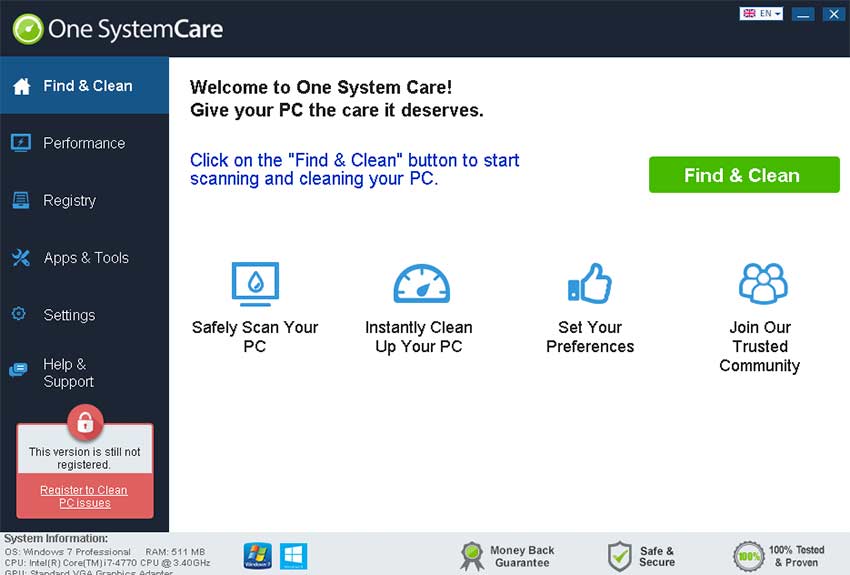I wrote this article to help you remove MacKeeper Virus. This MacKeeper Virus removal guide works for all Windows versions.
MacKeeper is a program, compatible with Apple Mac devices. The tool is used mainly for cleaning and optimizing your Mac’s memory. It also offers a security maintenance service. The application is rather expensive. Its services can only be acquired on a subscription basis. There is a month-to-month plan and extended plans for prepaid periods of 6, 12, 18 and 24 months. The short term plan costs $14.95 USD while the longest plan is for a fee of $4.95 USD a month. There is a trial version of the tool available which allows you to test its services and decide on whether you are interested in acquiring them.
Upon doing our own research on MacKeeper, we concluded that the program is not a wise investment. The reason for this conclusion is that the software involves security risks. MacKeeper is ad-supported. This means that its developers get paid to have it generate pop-up advertisements, promoting the content of various websites. The tool does not guarantee the reliability of third party websites, although its services include security maintenance. The MacKeeper ads can land you on corrupted websites and get your system infected with malware. Because of this, the tool is categorized as a potentially unwanted program (PUP).
The trial version of MacKeeper can be downloaded from its official website, mackeeper.com, in .dmg format. Users can acquire the monthly service for the corresponding price. However, the program’s official website is not the only source for it. The tool is often spread through underhanded methods, such as software bundles, spam e-mails, corrupted websites and compromised links. A bundle contains one or more extra tool apart from the main program. The extra software comes optionally. However, it is ticked per default. You have to find where an additional program is mentioned and remove the check mark from the box next to it. Neglecting to do so would equal allowing it to be installed to your system.

Spam e-mails can transfer a program like MacKeeper, disguised as an attached document. The bogus message will tell you that the file is a receipt for a letter or a delivery package, a bill or something else. To check if an e-mail is genuine, look up the sender’s name and contacts. Using Corrupted websites and compromised links is a direct distribution technique, known as a drive-by installation. Accessing them is enough to get you infected. This is why it is advised to be selective about the websites you visit and the links you follow. If you have doubts about a certain website, look for information about it.
The MacKeeper ads are very intrusive. They appear in great numbers. The program does not provide settings which allow users to control the ad flow. You will have to deal with the MacKeeper ads on a daily basis. Apart from being irritating, they will slow down your system’s performance. This is the consequence of the PUP using your system’s CPU to produce them. The slow computer performance is not the biggest problem, though. The most serious issue is the security threat. The application uses the ads to raise proceeds. For every time a user clicks on a given ad, the tool’s developers receive a certain unit of payment. Since the number of clicks determines the total proceeds for the program’s owners, they are their prime concern.
The MacKeeper ads promote the content of a wide array of websites, none of which have gone through a security check. The entity behind the MacKeeper software is a company called Kromtech Alliance Corp. It is based in Cologne, Germany, but also has offices in New Orleans, Louisiana and Road Town, Tortola, British Virgin Islands. The company has formulated an end user license agreement (EULA) which allows it to be exempt from responsibility for users’ virtual security. This applies not only for contacting a virus via the MacKeeper ads, but also for having data collected on you. The gathered information can be sold to undisclosed third parties without your consent.
You should uninstall the PUP as soon as you start seeing the MacKeeper ads on your screen. We have provided a removal guide below to help you rid your system of the undesired software. After you have removed the clandestine tool, you should scan your computer with an antivirus program. This will check if the PUP managed to let in any dubious software or make entries into your system’s registries.
MacKeeper Virus Removal
 Run the Task Manager by right clicking on the Taskbar and choosing Start Task Manager.
Run the Task Manager by right clicking on the Taskbar and choosing Start Task Manager.

Look carefully at the file names and descriptions of the running processes. If you find any suspicious one, search on Google for its name, or contact me directly to identify it. If you find a malware process, right-click on it and choose End task.

Open Control Panel by holding the Win Key and R together. Write appwiz.cpl in the field, then click OK.

Here, find any program you had no intention to install and uninstall it.

Open MS Config by holding the Win Key and R together. Type msconfig and hit Enter.

Go in the Startup tab and Uncheck entries that have “Unknown” as Manufacturer.
Still can not remove MacKeeper Virus from your computer? Please, leave a comment below, describing what steps you performed. I will answer promptly.

